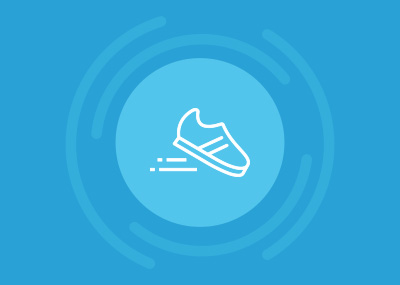10 Feb Advancing Less Invasive Approaches to Sports Medicine Procedures with Biomedical Textile Structures
 Sports and other physical activities contribute to many injuries annually. Per 2019 statistics from the National Safety Council (NSC), there were nearly three million sports recreation-related injuries in the U.S. that year alone that required treatment in hospital emergency rooms. Exercise accounted for the most (468,000 injuries), followed by cycling (417,000 injuries), basketball (404,000 injuries), and football (292,000 injuries)[i]. Sports injuries are particularly prevalent among adolescents, accounting for 3.5 million injuries a year in the U.S. ranging in severity, and 775,000 annual hospitalizations for kids under 14. In fact, almost one-third of all childhood injuries are sports-related, per the National SAFE KIDS Campaign and the American Academy of Pediatrics. Sprains and strains are by far the most common sports injury[ii].
Sports and other physical activities contribute to many injuries annually. Per 2019 statistics from the National Safety Council (NSC), there were nearly three million sports recreation-related injuries in the U.S. that year alone that required treatment in hospital emergency rooms. Exercise accounted for the most (468,000 injuries), followed by cycling (417,000 injuries), basketball (404,000 injuries), and football (292,000 injuries)[i]. Sports injuries are particularly prevalent among adolescents, accounting for 3.5 million injuries a year in the U.S. ranging in severity, and 775,000 annual hospitalizations for kids under 14. In fact, almost one-third of all childhood injuries are sports-related, per the National SAFE KIDS Campaign and the American Academy of Pediatrics. Sprains and strains are by far the most common sports injury[ii].
Since patients being treated for sports injuries are often young and enjoy engaging in physical activities, when treating them it is a high priority to restore and preserve their range of motion and natural movement. Less invasive sports medicine procedures can mean shorter recovery times and better results. To support these minimally invasive procedures, today’s medical device OEM’s are increasingly innovating by incorporating braided, woven or knitted biomedical textile structures into their product’s design.
From soft tissue tears to bone grafts to spinal stabilization, biomedical textiles are now frequently part of sports medicine procedures. Examples include tendon and ligament repair (especially when it comes to the treatment of Achilles and ACL injuries), acromioclavicular (AC) joint fixation, bone anchors, shoulder/rotator cuff repair, suture reinforcement patches, load sharing tethers, knee ligament repair, foot and ankle injury repair. Textiles are also used to treat PCL (posterior cruciate ligament), MCL (medial collateral ligament), LCL (lateral collateral ligament), knee meniscus (lateral and medial), articular cartilage replacement, ankle/suture-based and extra-cortical fixation buttons, and injuries of the bicep and quadricep.
Biomedical textiles are inherently compressible and flexible, so they are excellent for less invasive delivery applications that benefit from shape transformation (i.e. entering through a small hole and then expanding in the body). They are also highly compatible with biologic structures and can be tailored to the needs of the procedure. This often allows surgeries to be simpler and less invasive.
Braided textiles have a low profile and high tensile strength, allowing a surgeon to secure soft and bony tissue. Recent technology advancements allow for greater customization of braided textile properties (such as variable density) to facilitate a simpler and more durable surgical repair. Woven and knitted biomedical textile structures have also become increasingly sought after as foundations for implants and anchor points for attaching soft tissue due to their strength, compliance, and inherent capabilities for promoting tissue ingrowth.
For artificial ligament devices, it’s important to consider “intended performance (expected maximum load actions, intended minimum and maximum relative angular movement between the skeletal parts, dynamic response of the body to the shape/stiffness of the implants); design attributes (stability of the implant while allowing prescribed minimum and maximum relative movements between the skeletal parts, avoidance of cutting or abrading tissue during function other than insertion or removal, the creep resistance and rupture characteristics); materials; design evaluation (pre-clinical evaluation, clinical evaluation); and manufacture and inspection[iii].” An artificial ligament can be made of a multilayered or tubular woven structure having intra-region, at least one bend region and end regions[iv]. These textile structures can distribute load over a larger surface area and be engineered to mimic the behavior of the ruptured tendons and ligaments they are replacing.
Cortland Biomedical is trusted by leading medical device OEMs to enable greater sports medicine device innovation by designing and engineering biomedical textiles fit-for-purpose. Cortland has the equipment and expertise to create unique and highly customized fabrications that can make devices more reliable while allowing for less invasive surgical procedures that may help get any athlete – from a little leaguer to a pro – back in the game sooner.
By John Greco, Vice President, Sales
[i] Facts + Statistics: Sports injuries | III
[ii] Sports Injury Statistics | Johns Hopkins Medicine
[iii] Artificial Ligament – an overview | ScienceDirect Topics
[iv] Implantable Medical Textiles | Artificial Ligament | Artificial Skin | Vascular Graft | Textile Study Center


